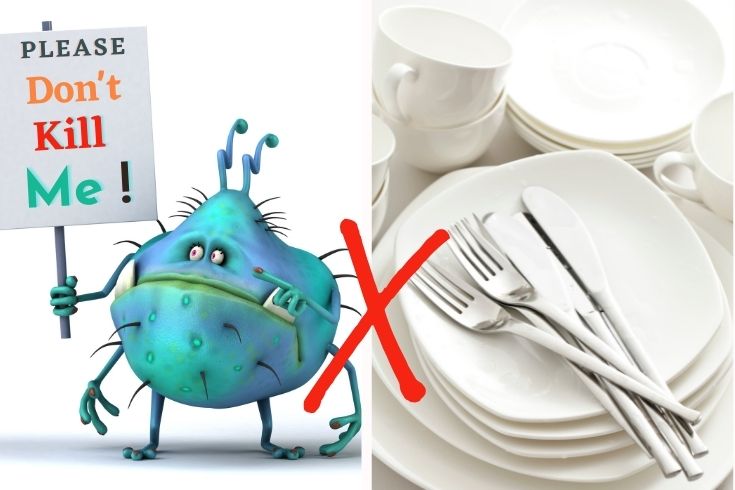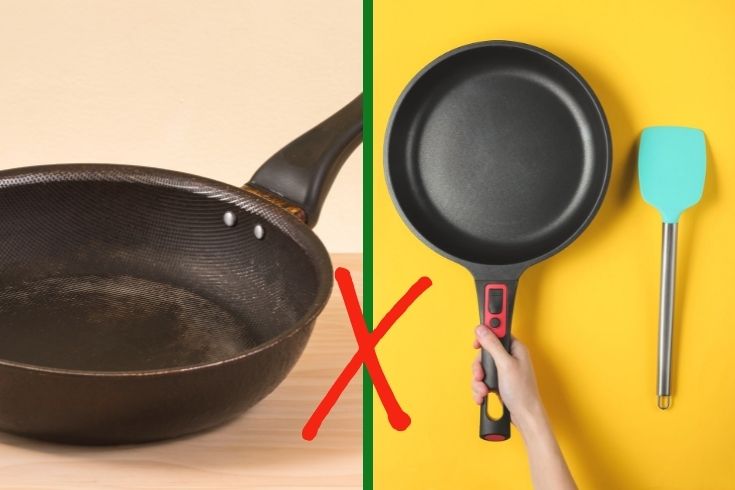Crockery and cutlery are the two most important dining essentials that we need in our daily life. Whatever delicious dish you eat rusty and dirty crockery and cutlery will give you a bad impression. Here are the important kitchen tips on a list of 5 important ways to check plate and cutlery are germ free.

Below are a few easy ways to ensure that the cutlery and crockery you use daily are thoroughly cleaned and safe from germs and bacteria.
5 important tips to check your plate and cutlery are germ free
If you want to know how you can do these simple Kitchen tips on 5 important tips to check your plate and cutlery are germ free.Read the below instructions properly.
Germ free hands
The First and foremost thing to maintain plate and cutler germ free, first makes your hands germs free.
You know our hands are one of the main sources of transmissions of bacteria all round the kitchen,
because we often touch many things in our kitchen, from raw foods including meat, vegetables etc to fridge handles, towels, spices, kitchen cabinet and cooking utensils.
So to keep your kitchen clean and germ free we first need to keep our hands clean.
For this we must wash our hands thoroughly with soap and warm water at below mentioned times:
- before starting to prepare food
- after touching raw food including meat, poultry, vegetables and eggs
- after going to the toilet
- after touching the bin
- after touching pets
If you have a dryer in your house you can dry your hands thoroughly otherwise you can use disposable kitchen towels. Make sure your hands must not wet because wet hands will help the bacteria to spread easily.
Use clean cloths
Clothes are another important thing you keep in mind to keep plates and cutlery germ free.
Because dirty and damp cloths or sponges are the perfect places to grow bacteria. So wash your kitchen cloths or sponges regularly and keep them to dry before using them again.

To stay on the safe side if you have options you can use a disposable kitchen towel to wipe worktops and chopping boards, because you through them out after using them.
Otherwise, you can use different cloths for separate jobs such as using one cloth to wipe worktops and another to wash dishes, in this way bacteria will not spread easily.
| Also read : how to blanch almond fast
Clean and germ free crockery
After completing cooking always wash your crockery as soon as possible otherwise germs may build up on it.
If you are lazy to immediately wash your utensils, then you can pour some warm water on it, this helps to avoid any staining.
You can also wash your crockery with hot and soapy water along with a pinch of salt, this helps in keeping your crockery thoroughly clean and safe from germs.
If you use artistic crockery or antique pieces, then never use any synthetic chemicals, vinegar or lemon this will become erosion of painted coatings.
| Also read : how to use pressure cooker safely
Use clean cutlery
Most people prefer washing cutlery in a dishwasher as it may seem like a tedious task to wash every single cutlery manually. This is why spoons and other cutlery essentials are often left to pile up and later washed in a dishwasher.

However, to ensure that your cutlery is cleaned nicely, you can dip them in a large utensil with water, lemon juice or baking soda as this removes any chances of food deposition or staining. Whether you like it or not washing cutlery manually can always help in keeping germs away.
| Also read : how to use pressure cooker safely
De-clutter and disinfect kitchen countertop
The last most important thing is to declutter the kitchen cabinet and remove all unnecessary items from your countertop including grocery items, bills receipts, raw vegetables, raw fruits and keys on kitchen cabinets.

This helps to clean your countertop easily.
Now it is easy to disinfect the kitchen cabinets to remove any germs that may have gotten on board.
Kitchen tips : 5 important tips to check your plate and cutlery are germ free
Equipment
- Dishwasher
Materials
- Cutlery
- Crockery
- Kitchen towel
- Warm water
- Soap
- Salt
- Lemon juice
- Baking soda
Instructions
- How to check plate and cutlery are germ free
- At first we should germ free our hands because we often touch many things in our kitchen, from raw foods , vegetables to fridge handles, towels, spices, kitchen cabinet and cooking utensils.
- For this we must wash our hands thoroughly with soap and warm water in before preparing food and after making food.
- Always use clean cloths in kitchen because dirty cloth is the main source of transmission of bacteria.
- For this wash your kitchen cloths or sponges regularly and keep them to dry before using them again.
- Otherwise you can use different cloths for separate jobs.
- Always use clean and germ free crockery , just do little task after completing cooking always wash your crockery in hot and soapy water along with a pinch of salt otherwise germs may build up on it.
- Don't forget to use clean cutlery just dip them in a large utensil with mixture of water, lemon juice or baking soda as this removes any dipostions of food.
- Last important thing is don't forget to de-clutter and disinfect kitchen countertop remove any unnecessary items from your countertop including grocery items, bills receipts, raw vegetables, raw fruits and keys on kitchen cabinets.
- Now it is easy to disinfect the kitchen cabinets to remove any germs that may have gotten on board.
Notes
Germ Free Note
- If you use artistic crockery or antique pieces, then don't use any synthetic chemicals, vinegar or lemon this will become erosion of painted coatings.





Leave a Comment